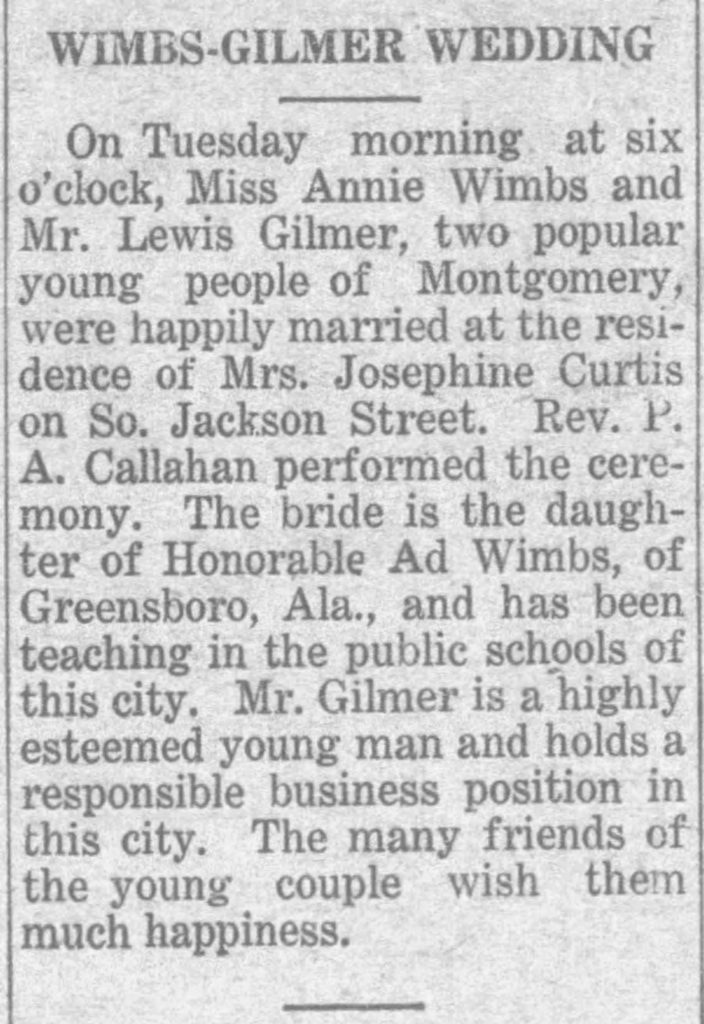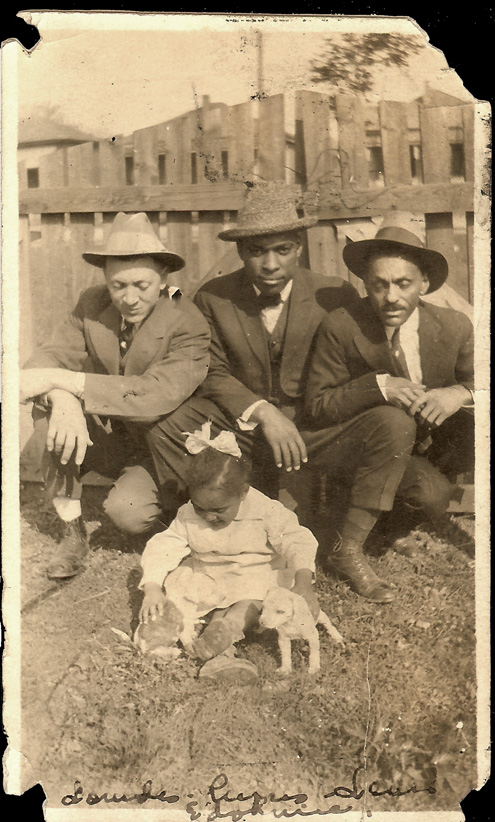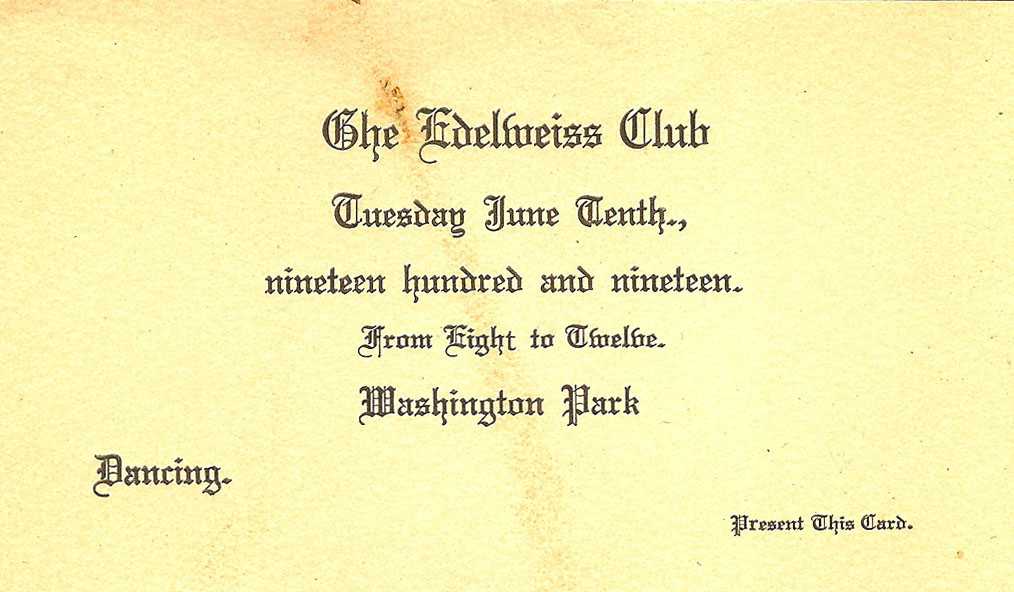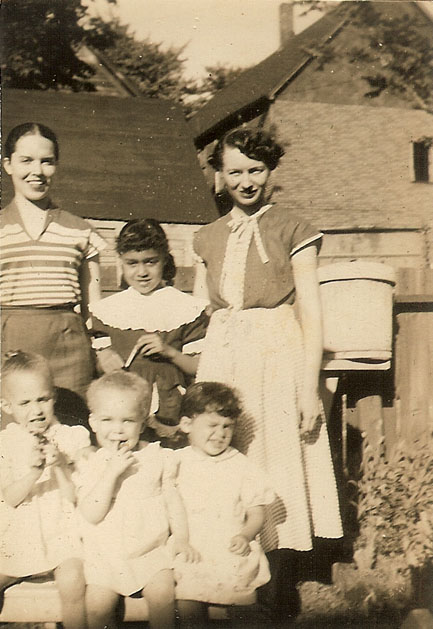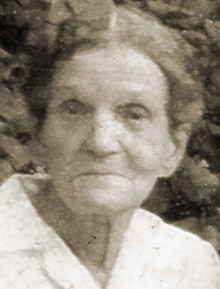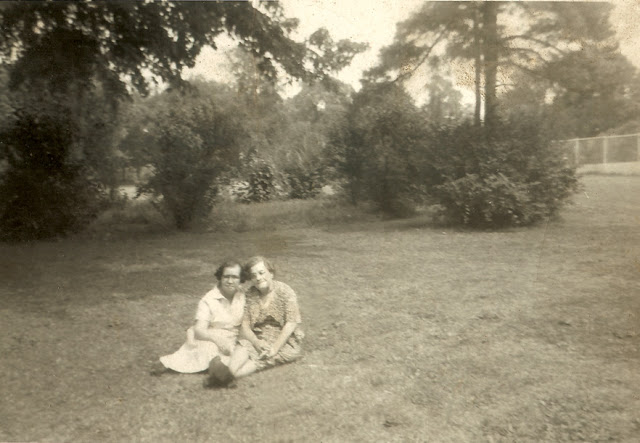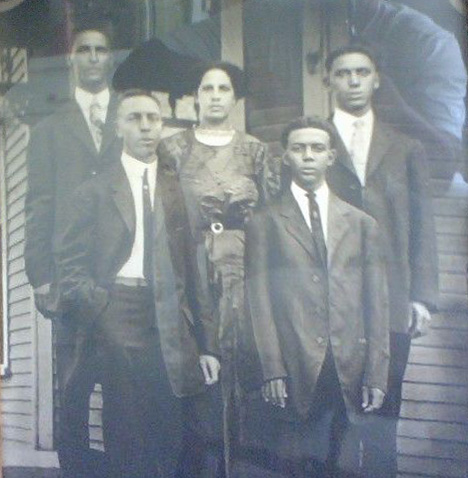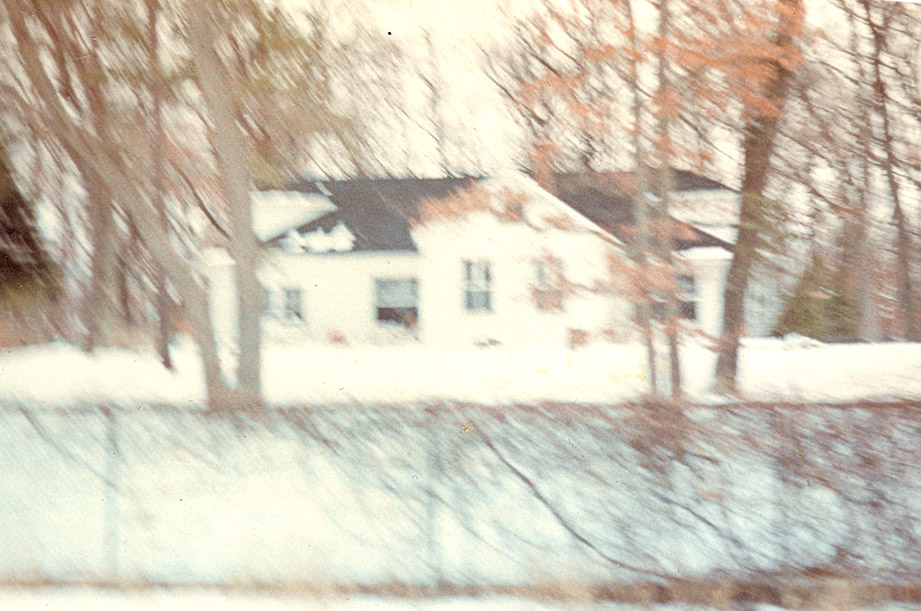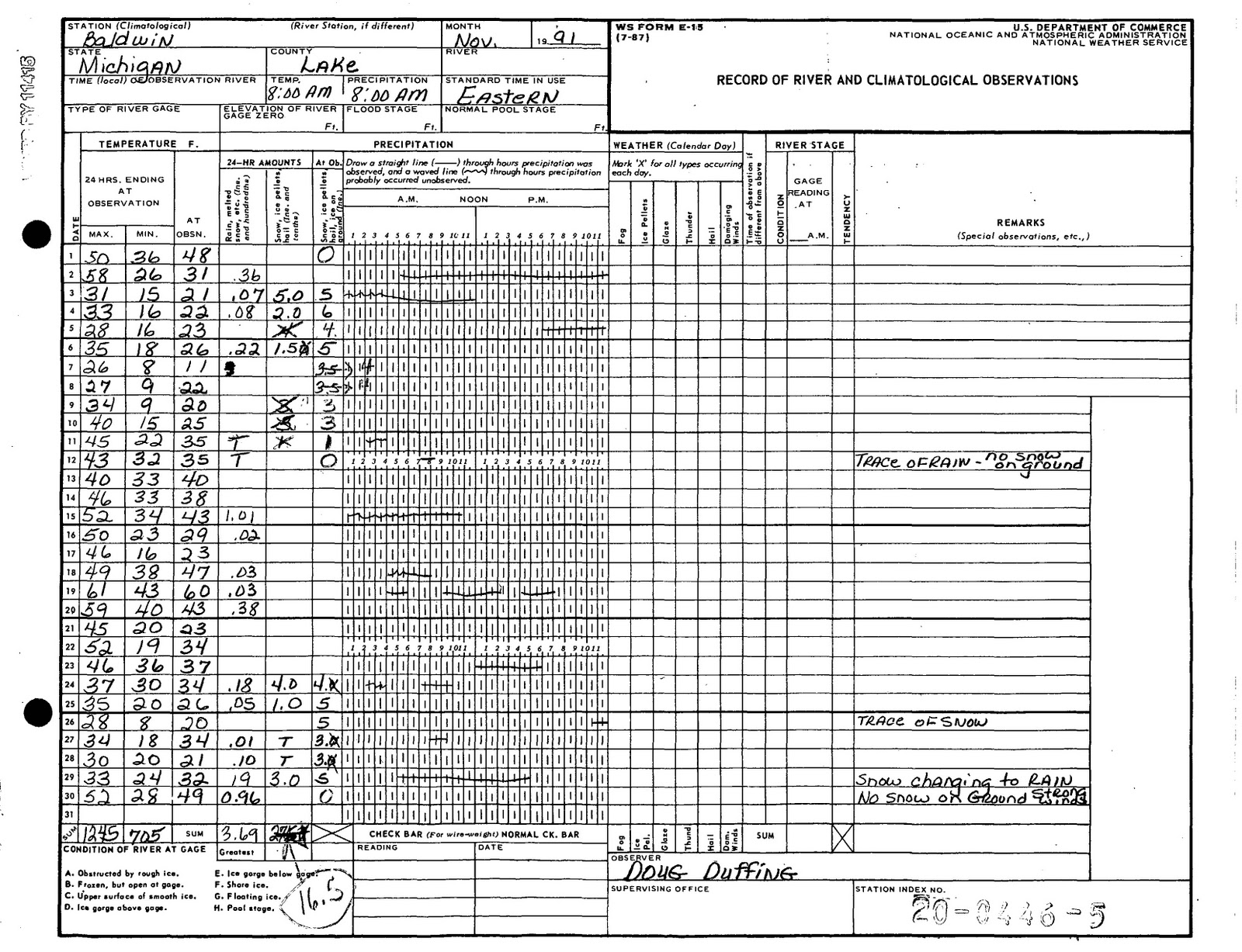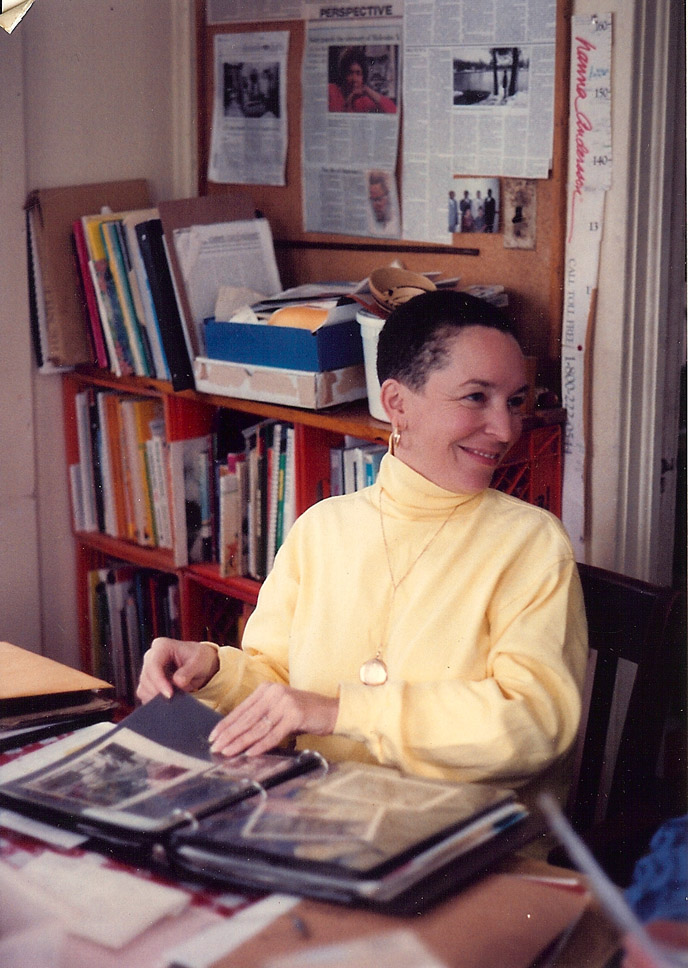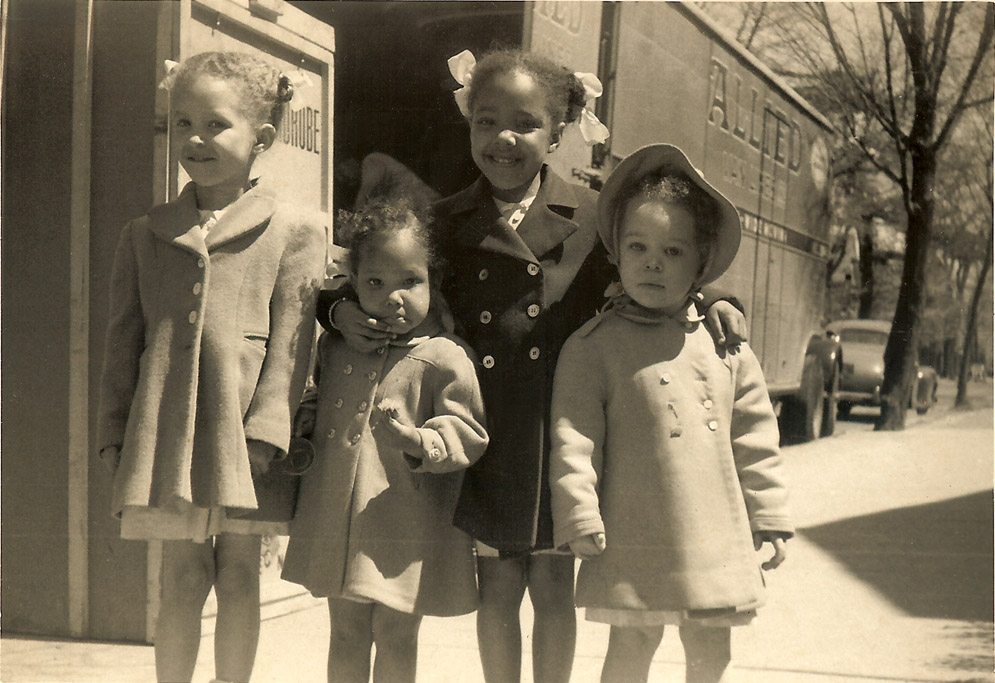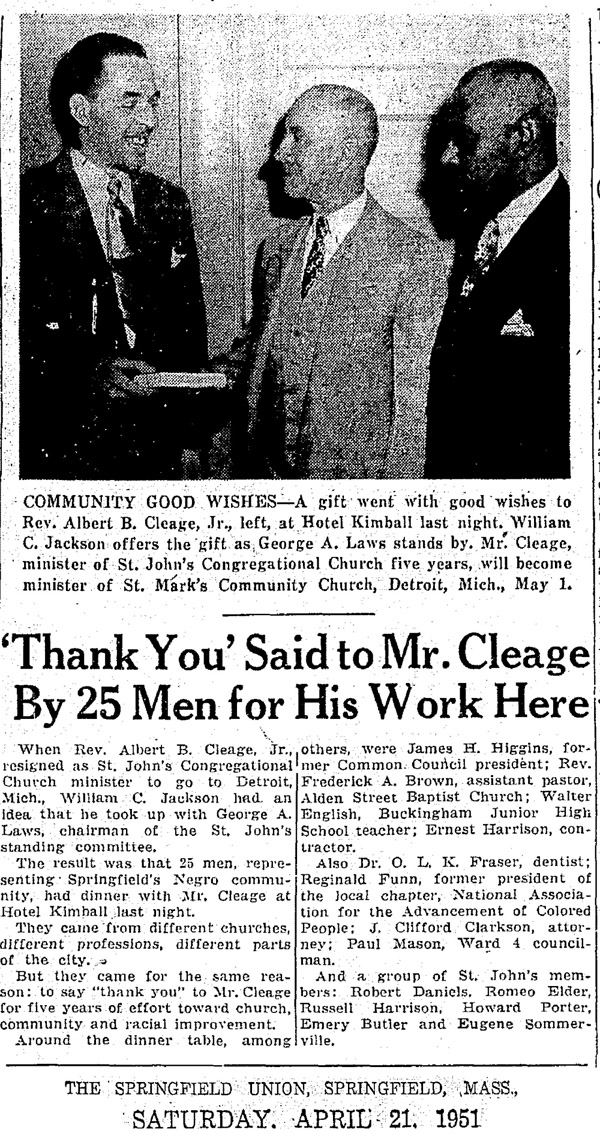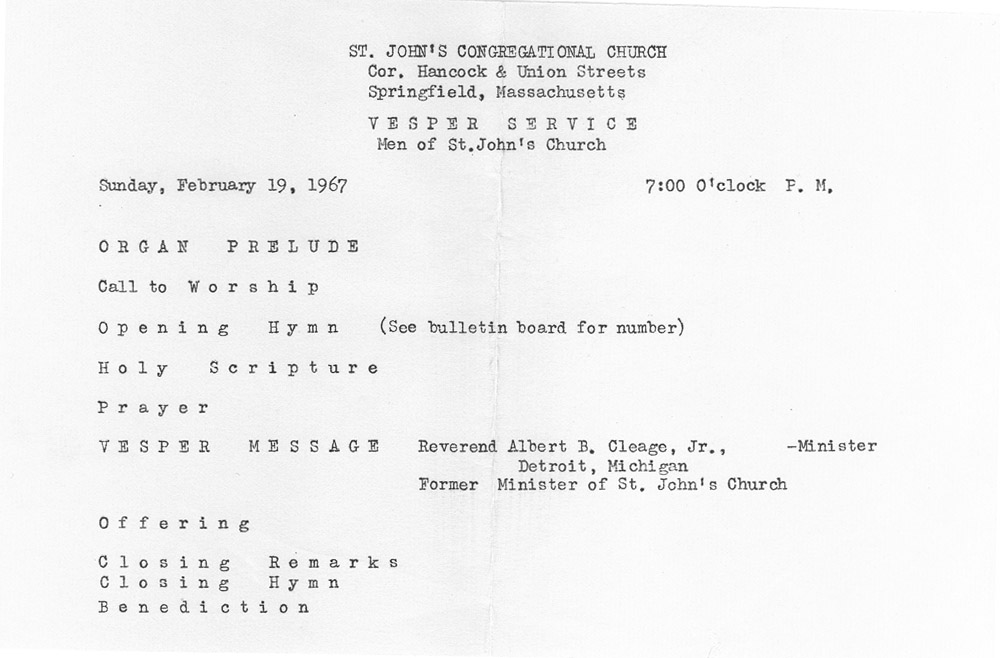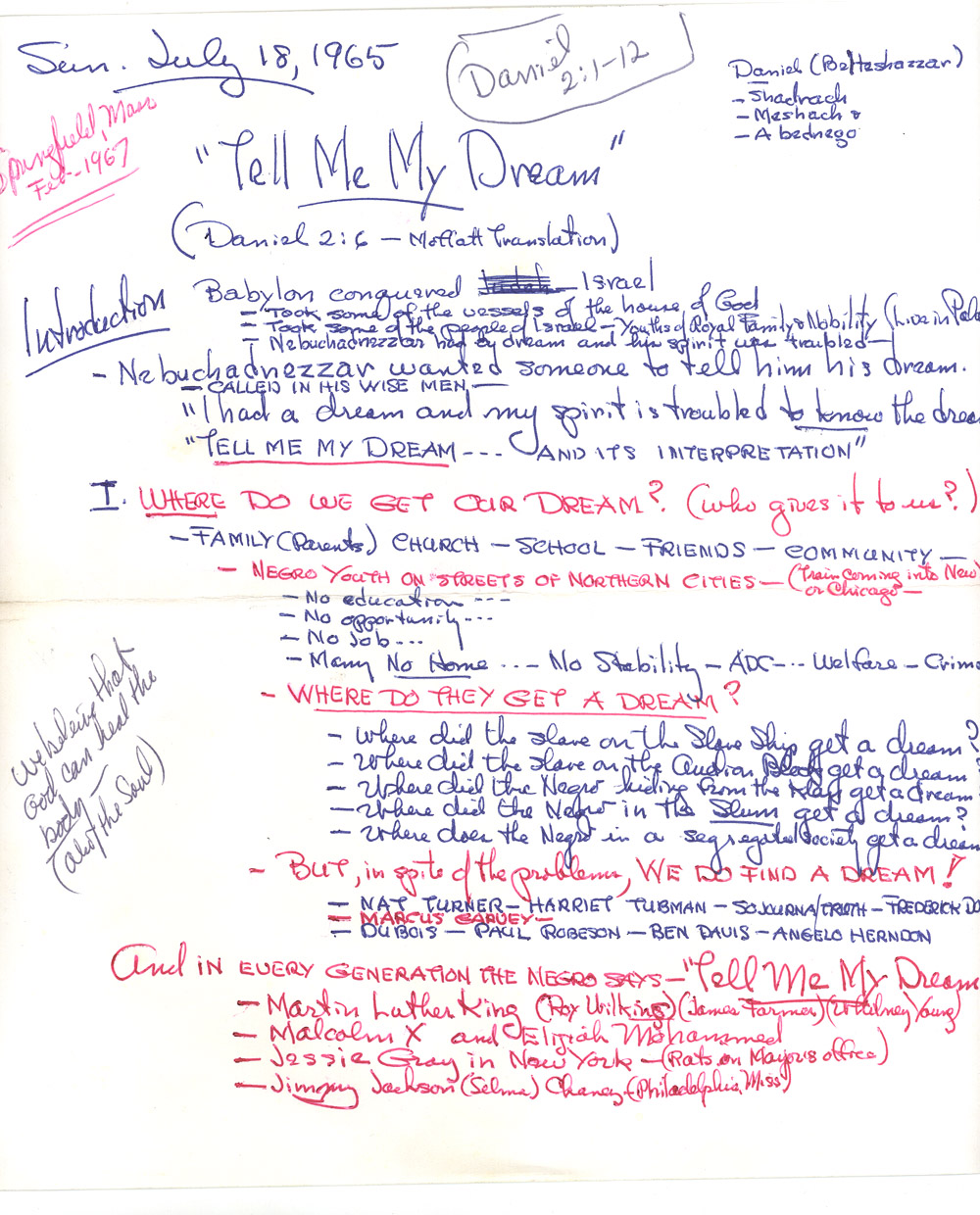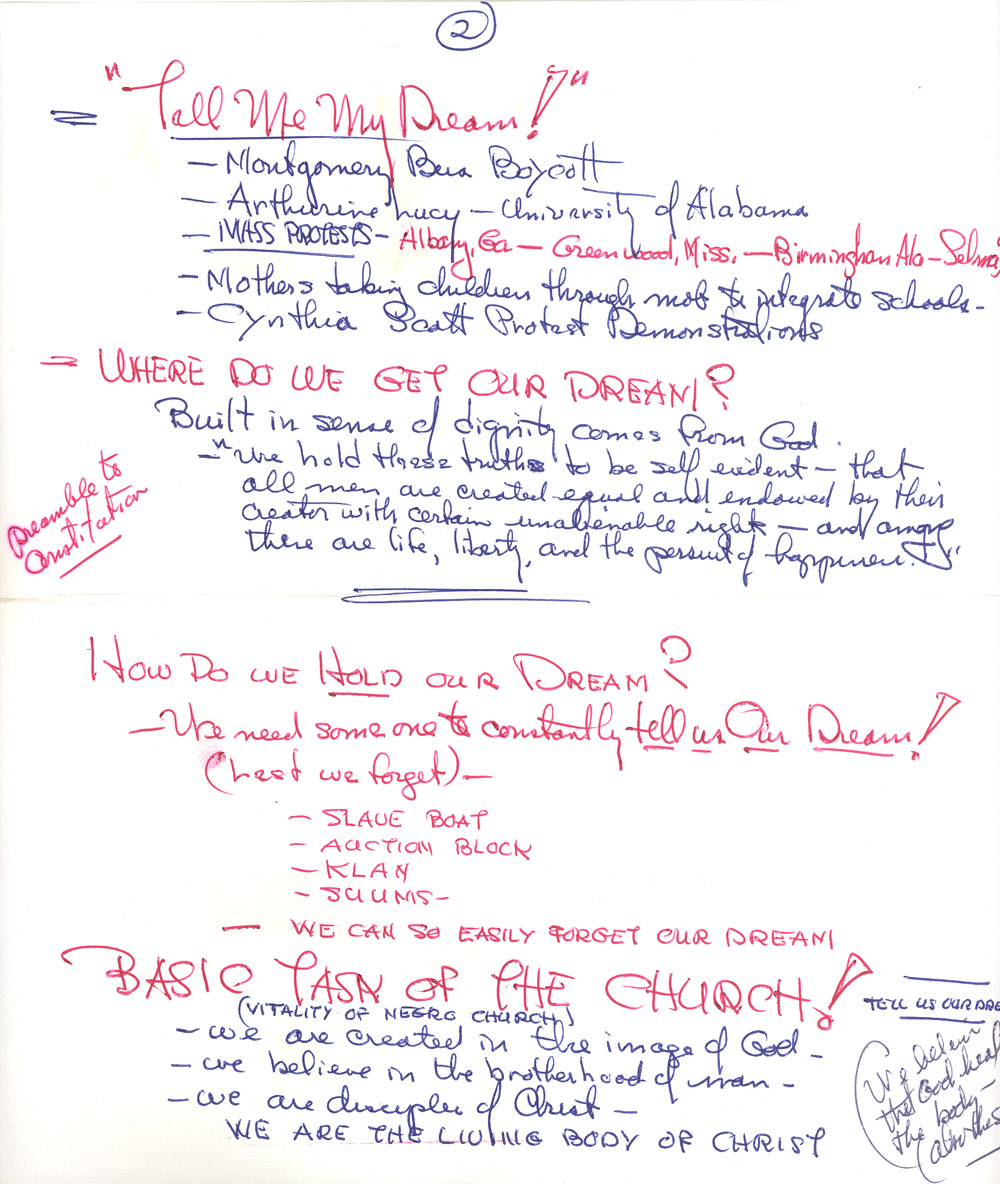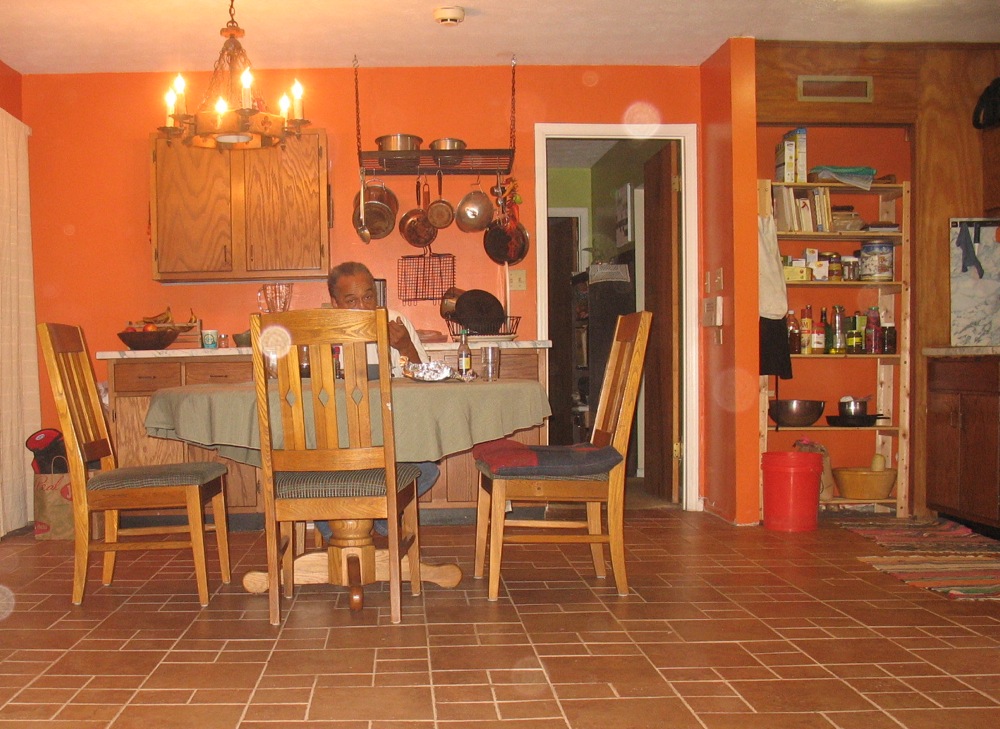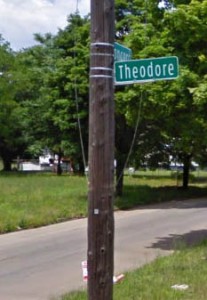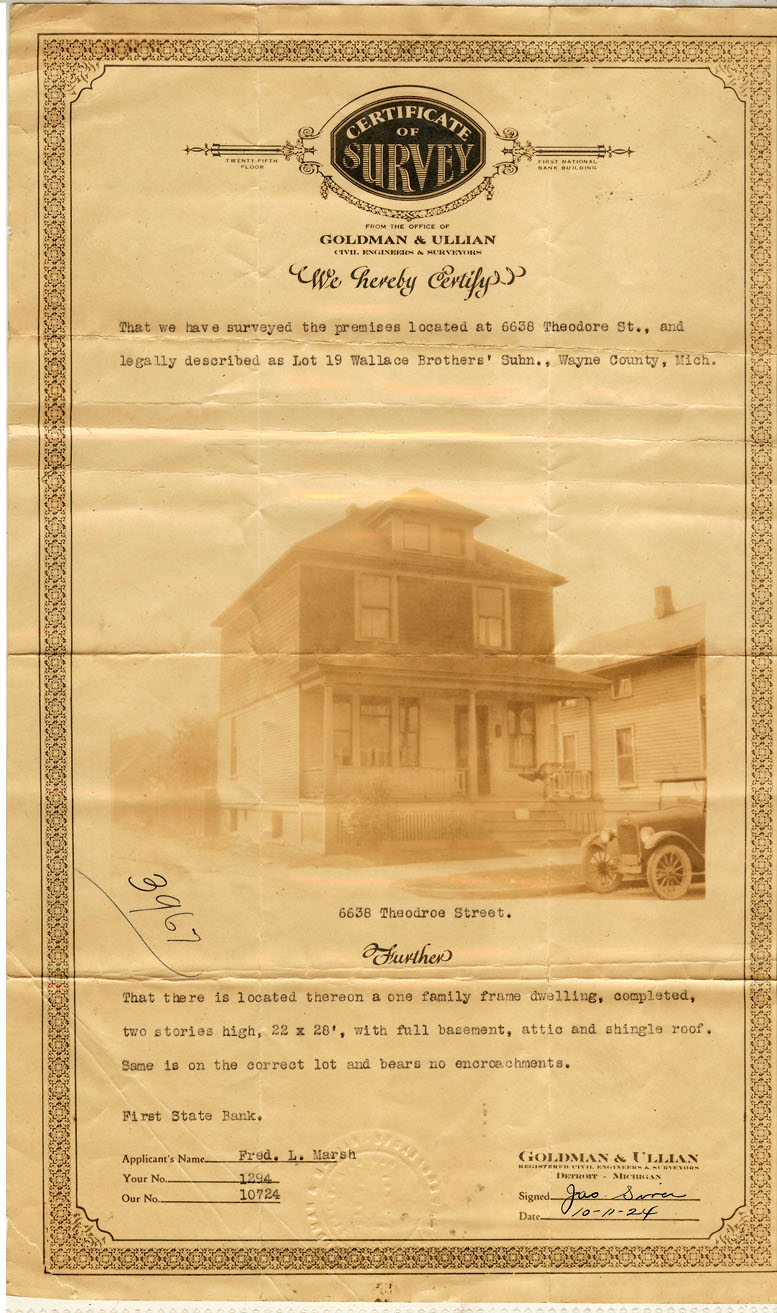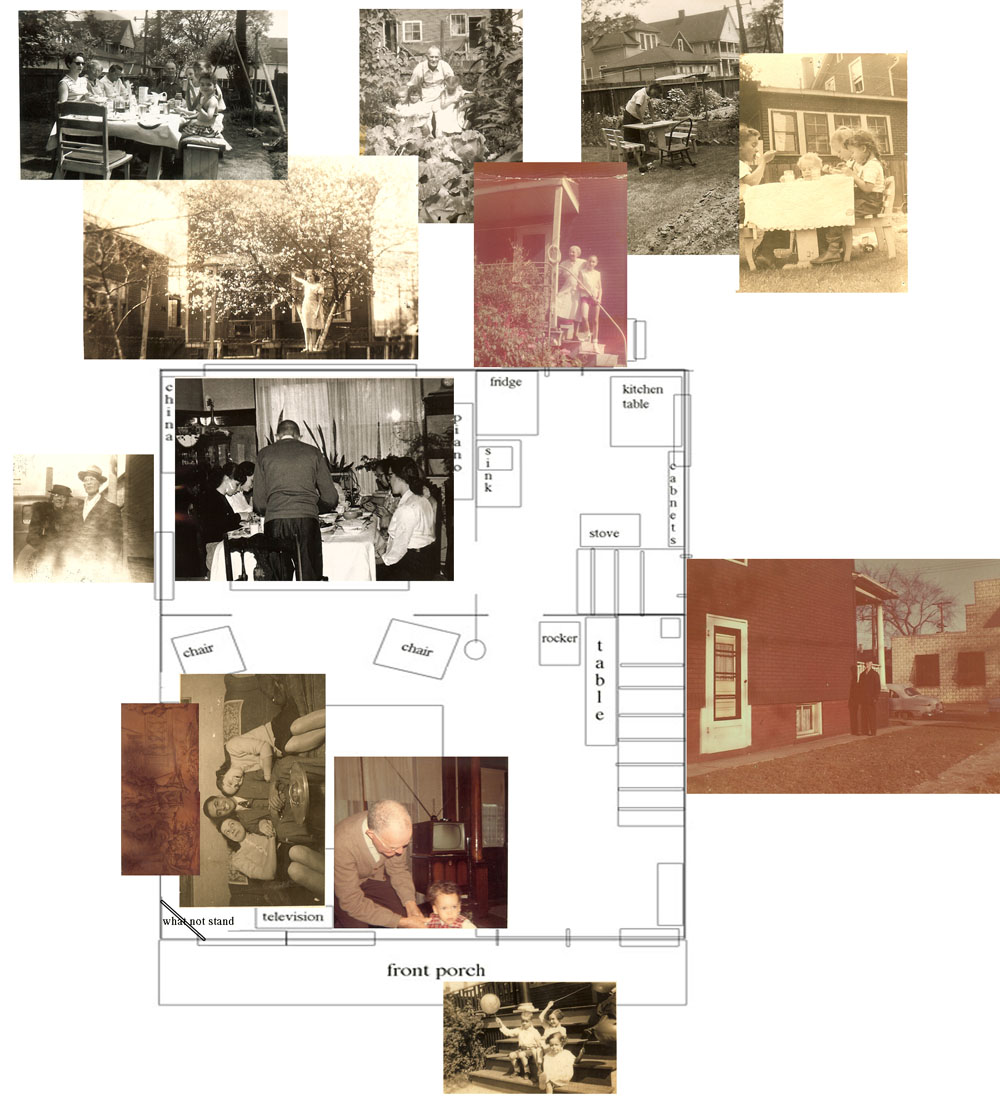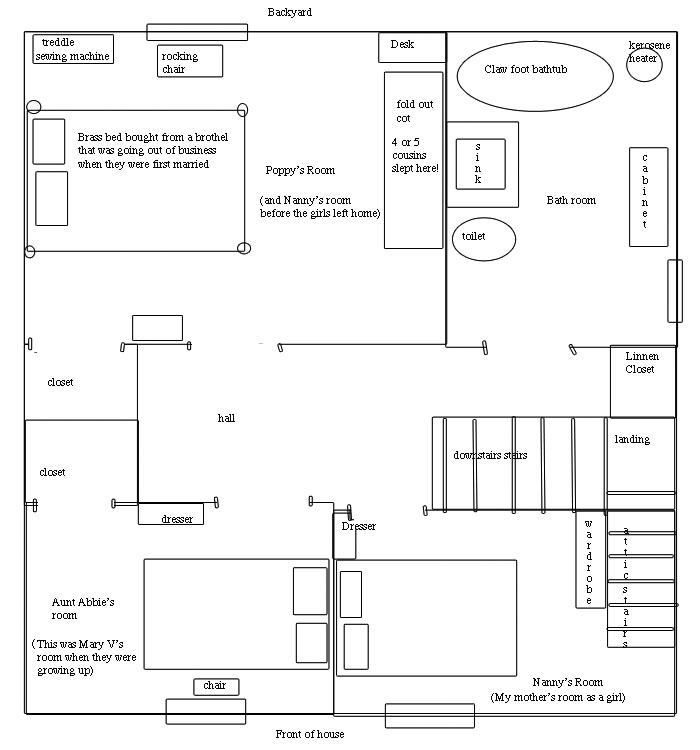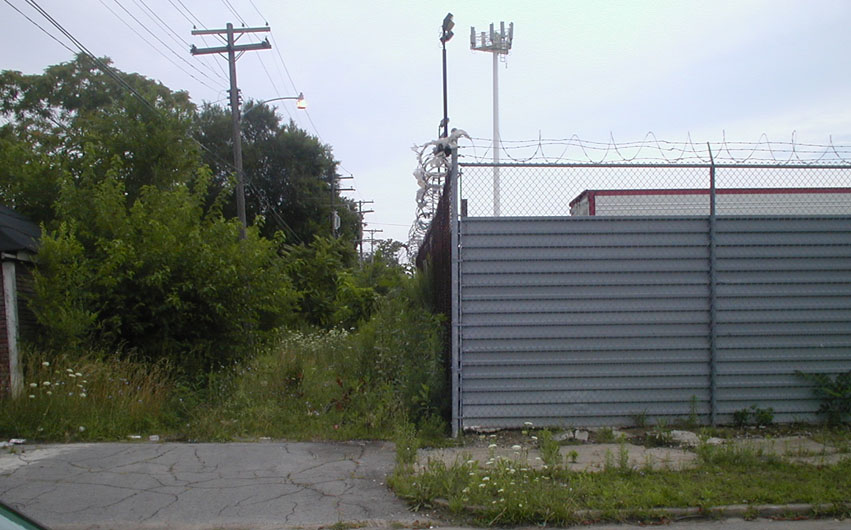This year I am going through an alphabet of news items taken from The Emancipator newspaper, published between 1917 and 1920 in Montgomery, Alabama. Most are about people and places in my grandparent’s life. Each item is transcribed directly below the clipping. Click on any image to enlarge.
_________________
Lewis Gilmer was one of my grandfather’s good friends. Annie Wimbs and my grandmother were both members of the Edelweiss Club.
Wimbs-Gilmer Wedding
“On Tuesday morning at six o’clock, Miss Annie Wimbs and Mr. Lewis Gilmer, two popular young people of Montgomery, were happily married at the residence of Mrs. Josephine Curtis on So. Jackson Street. Rev. P. A. Callahan performed the ceremony. The bride is the daughter of honorable Ad Wimbs, of Greensboro, Alabama, and has been teaching in the public schools of this city. Mr. Gilmer is a highly esteemed young man and holds a responsible business position in this city. The many friends of the young couple wish them much happiness.”
“Mr. and Mrs. Louis Gilmer were recently made the proud parents of a little girl. Mrs. Gilmer was formerly Miss Annie Wimbs.”
Lewis Abram Gilmer was born in Montgomery, Alabama on May 18, 1885. He and his seven siblings were raised there by their parents Louis and Cornelia Gilmer. His father was a porter, a butler and a chauffeur. Lewis worked as a bank messenger in Montgomery. He and his wife, Annie, had five children. Iola was born in 1919 in Montgomery. Cornelia was born in 1924 in Mississippi. Ellen, Willese and Dolores were born in 1925, 1927 and1931 in Detroit.
Lewis worked as a waiter when he first came to Detroit and then as a porter in a department store. Annie worked as a teacher in Montgomery before she married and did not work outside the home afterwards. By 1930 they bought a house in the Conant Gardens neighborhood of Detroit.
Members of Lewis Gilmer’s family moved to Detroit and lived on Scotten Avenue, several blocks from my other grandparents, the Cleages who were not from Montgomery. Some of the Gilmers later returned to Montgomery.
Annie Gilmer died in 1948. Lewis lived another twenty years and died in 1969. Their descendants are numerous and widespread.
_________________
I found this information on Ancestry.com in Census Records, Directories, Death Records, Military Records and Marriage Records. I also received some update through a descendant of the Gilmer’s who read an earlier blog post about her grandfather. The news item was found on Newspapers.com.
